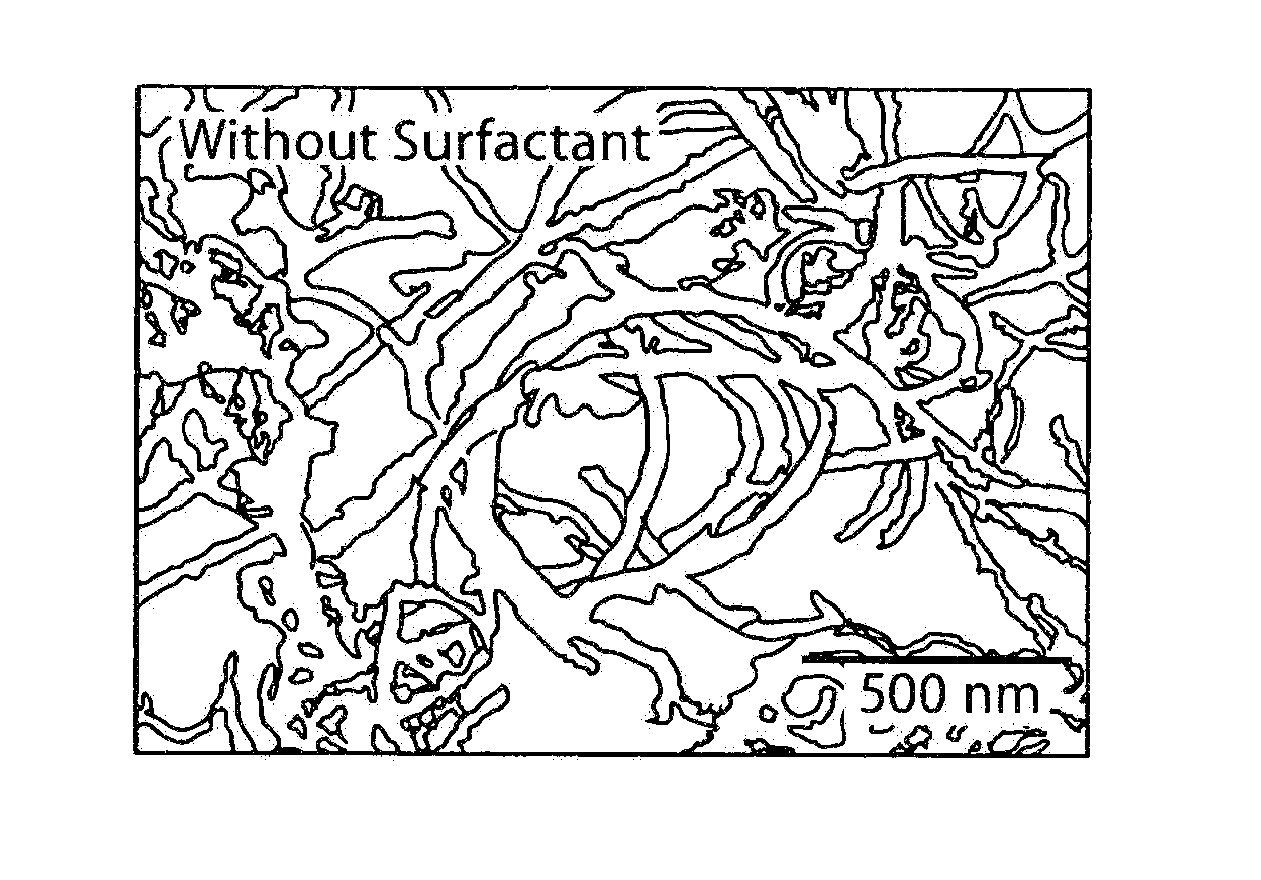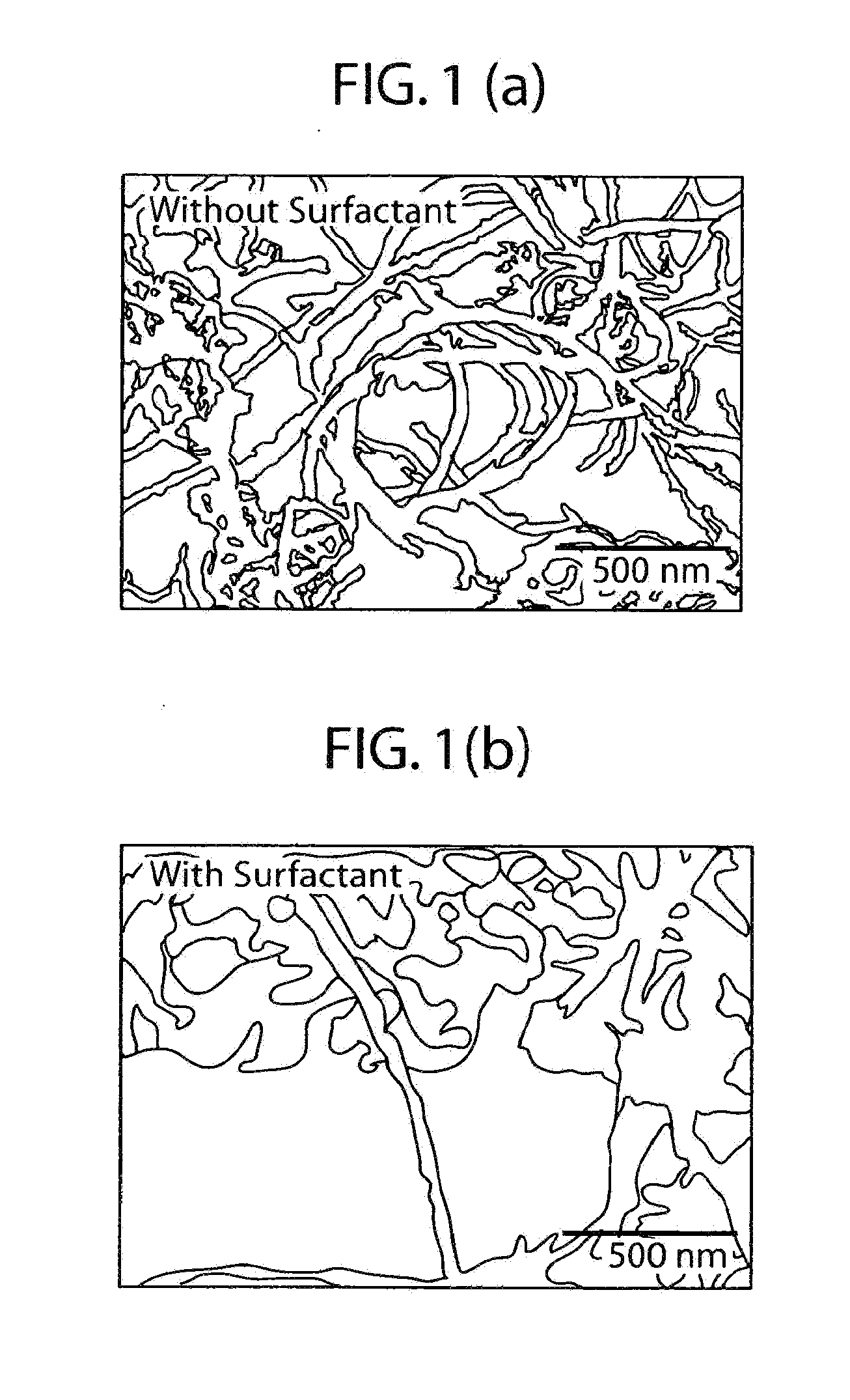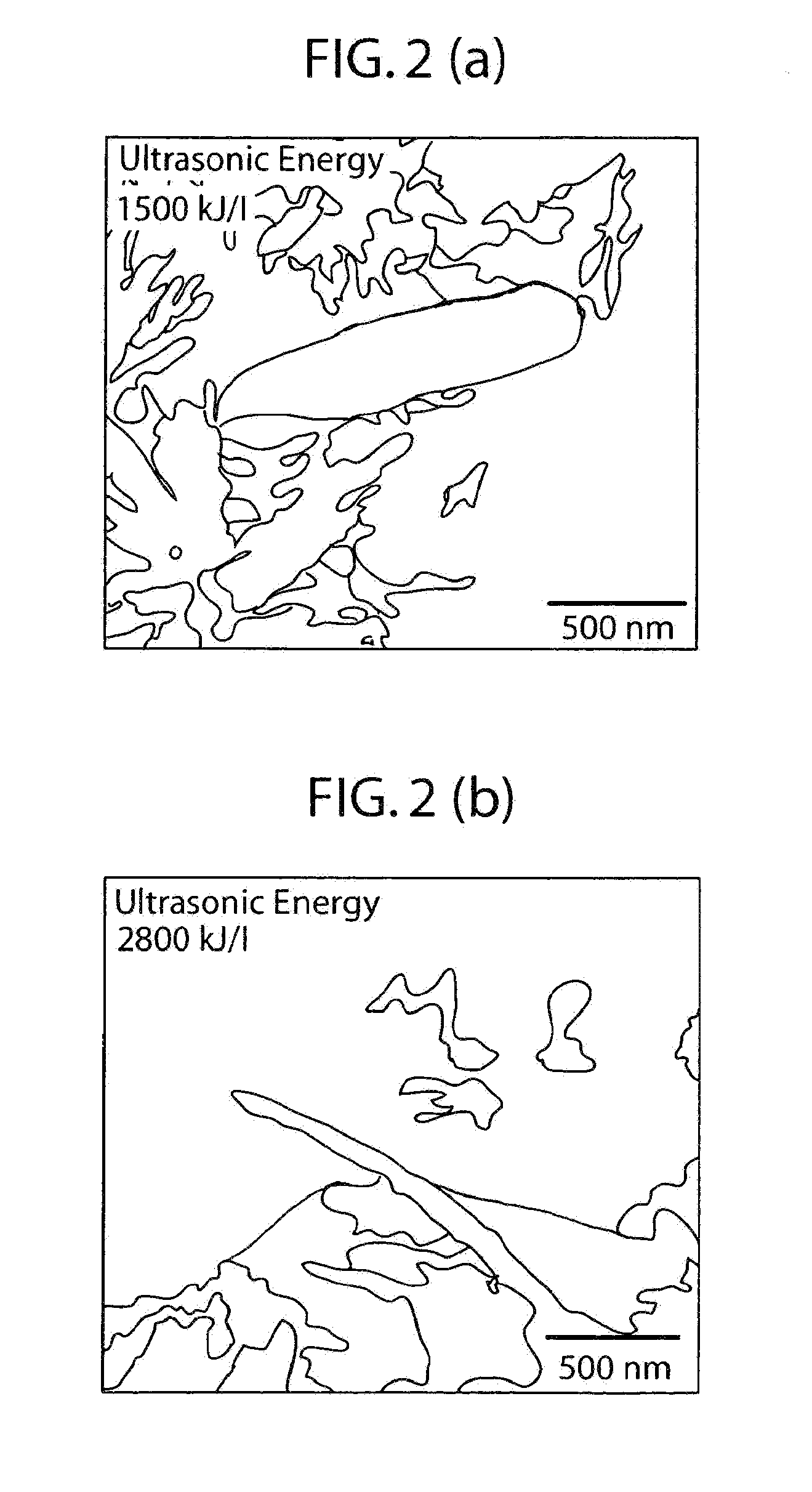Highly-dispersed carbon nanotube-reinforced cement-based materials
a technology of carbon nanotubes and cement, which is applied in the field of reinforced cement-based materials, can solve the problems that the typical dispersion techniques of cnts, such as dispersion with sodium dodecyl sulfate or dispersion using different types of acids, cannot be employed for cementitious materials, and achieves cost-effectiveness and high performan
- Summary
- Abstract
- Description
- Claims
- Application Information
AI Technical Summary
Benefits of technology
Problems solved by technology
Method used
Image
Examples
example 1
Ultrasonic Energy Requirement
[0055]This Example serves to illustrate whether the use of ultrasonic energy is required in order to achieve effective dispersion. The effect of ultrasonic energy on the dispersion of the CNTs was investigated measuring the rheological properties of cement paste samples reinforced with MWCNTs under steady shear stress. Rheology is a method commonly used to study the microstructure of nanotube dispersions. Under low shear stress, CNT agglomerates control the viscosity of cement nanotube suspensions. Therefore, suspensions with larger scale agglomerates exhibit higher viscosity (Yang et al., J. Appl. Phys. 2006, 99, 114307).
Materials
[0056]Long MWCNTs were used. The surfactant used was a full range water reducing admixture (superplasticizer) based on polycarboxylate chemistry (Glenium 3030) produced by BASF.
Samples Preparation
[0057]Six dispersions were prepared by mixing the MWCNT (0.16 g) with aqueous surfactant solutions (100 g) at surfactant to CNTs weig...
example 2
Surfactant Concentration Effect
[0059]The present example involves determining an optimum surfactant / CNTs ratio in an attempt to achieve effective dispersion of CNTs in the cement matrix. In order to investigate the surfactant concentration effect on the dispersion of the carbon nanotubes, nanoimaging of the fracture surfaces and fracture mechanics tests of samples with surfactant to CNTs weight ratios of 0, 1.5, 4.0, 5.0, 6.25 and 8.0 were performed. Cement paste samples (w / c=0.5) reinforced with 0.08 wt % CNTs treated with different amounts of surfactant were prepared following the protocol and the mix proportions described in Example 1.
Results and Discussion
[0060]Results from SEM images at a 1 μm scale are presented in FIGS. 5(a) and (b). As expected, in the samples where dispersion was achieved without the use of surfactant [FIG. 5(a)], CNTs appear poorly dispersed in cement paste, forming large agglomerates and bundles. In the case where dispersion was achieved with a surfactant...
example 3
Effect of Ultrasonic Energy
[0062]This example serves to illustrate the effect of ultrasonic energy on the dispersion of short and long CNTs. To investigate the effect of ultrasonic energy on the dispersion of short carbon nanotubes, fracture mechanics tests of samples reinforced with CNTs dispersed using energy of 700, 1400, 2100, 2800 and 3500 kJ / l were performed. To study the effect of ultrasonic energy on the dispersion of long CNTs fracture mechanics tests of samples reinforced with long CNTs dispersed using energy of 2800 and 4200 kJ / l were conducted. Additional experiments were performed to determine the effect of presonication on the dispersion of long CNTs.
Samples Preparation
[0063]In order to investigate the effect of ultrasonic energy on the dispersion of short MWCNTs, five dispersions were prepared, at a surfactant to CNTs ratio of 4.0, by adding 0.26 g of short MWCNT to 100 g of aqueous surfactant solution containing 1.04 g of Glenium 3030. The resulting dispersions were ...
PUM
| Property | Measurement | Unit |
|---|---|---|
| aspect ratios | aaaaa | aaaaa |
| diameter | aaaaa | aaaaa |
| diameter | aaaaa | aaaaa |
Abstract
Description
Claims
Application Information
 Login to View More
Login to View More - R&D
- Intellectual Property
- Life Sciences
- Materials
- Tech Scout
- Unparalleled Data Quality
- Higher Quality Content
- 60% Fewer Hallucinations
Browse by: Latest US Patents, China's latest patents, Technical Efficacy Thesaurus, Application Domain, Technology Topic, Popular Technical Reports.
© 2025 PatSnap. All rights reserved.Legal|Privacy policy|Modern Slavery Act Transparency Statement|Sitemap|About US| Contact US: help@patsnap.com



